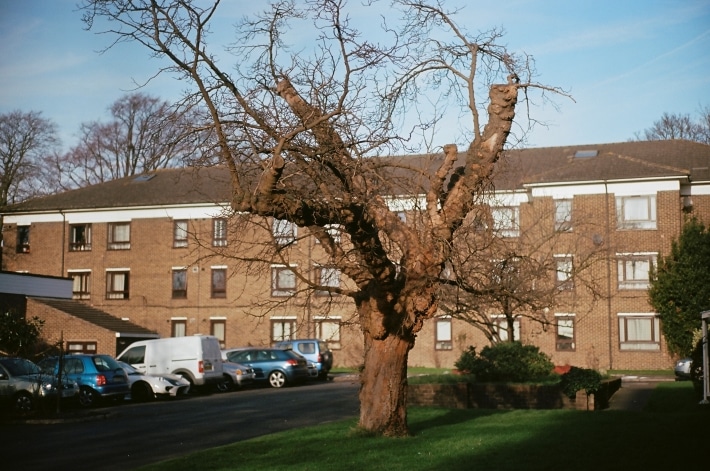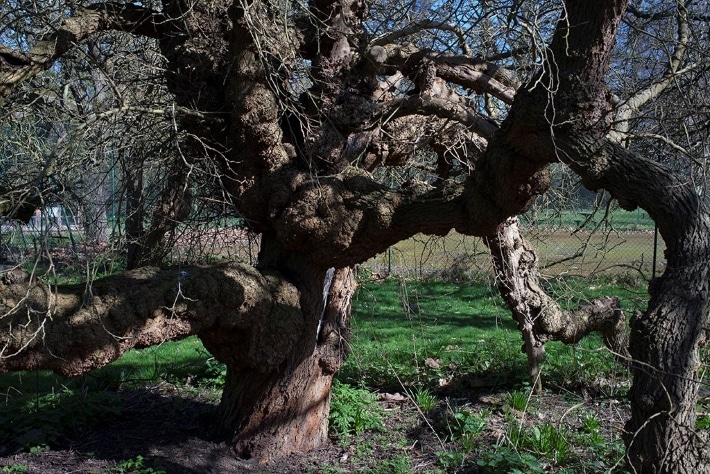Peter Coles, Editor and co-founder Morus Londinium

Black mulberry in Streatham Park, on the site of an 18th century country house where lexicographer Dr Johnson once lived
Until the first London Recorders’ Day conference, I had no idea that I, and Morus Londinium, the project I helped to set up nearly three years ago, was part of a community. But there I was, the final speaker in a day of fascinating presentations, showcasing the extraordinary creativity and dedication of those recording, mapping and helping to preserve biodiversity in London.
Morus Londinium was launched in May 2016 by The Conservation Foundation, with support for two years from the Heritage Lottery Fund. The goal was to research, document and help preserve London’s mulberry tree heritage. At the heart of the project is a user-friendly website, featuring an interactive map, all kinds of information on mulberries and their history, featured trees, walks and a blog. With a computer, smartphone or tablet connected to the internet, users can add new trees to the map and database, or consult the website to locate mulberry trees and find out about their history, how to identify the different species and how to look after them. Upcoming events listed on the website include talks, guided walks and foraging events.
When the project first started we had primed the map with all the mulberry trees within the M25 orbital road that we could find in existing databases, plus a few more that we knew of. The total was about 40 mulberry trees (out of around 8-10 million trees of all species in Greater London). Nearly three years later, we have received over 750 entries via the website. After preliminary checks, over 550 of these have now been published on the map, often with an accompanying photo. The remainder are either duplicates or incomplete entries. More trees are being recorded every week and some of the registered sites turn out to contain more than one tree – a potential source of error that I am slowly correcting with site visits.
So why a whole project devoted to mulberry trees? Why are they so special?
The short answer is that the general public (which includes me) simply have an affection for these trees. They seem to be associated in peoples’ minds, amongst other things, with play, fun and children. And, of course, their delicious, succulent, black fruit, which stains anything and everything in the short two months (July-August) when they are ripe. But there are deeper reasons. As a non-native species that does not easily self-seed, most of these trees will have been deliberately planted, or have layered from an older tree that has gone into decline and possibly rotted away. Given that London has seen countless waves of development, fires, storms, bombs, demolition — and more development — the older trees can be all that survives at the surface of multiple layers of social and cultural change, perhaps dating back several centuries. I have likened them to hyperlinks to a hidden past.
The hidden treasure in the Morus Londinium database lies in these concealed stories. Black mulberries (Morus nigra, the juicy-fruited species we are most likely to find in England) were originally brought over by the Romans in the first century AD. They were grown for their medicinal value – a tradition continued in medieval monasteries. A group of possible Tudor survivors can be found in an ancient orchard next to Syon House, a former Bridgettine Abbey, founded in 1415 and requisitioned by the Crown after the dissolution of the monasteries in the 1530s.

Veteran black mulberry in the orchard of Syon House
The watershed moment for UK mulberries, though, was James I’s attempt in 1607/8 to start a silk industry in England to provide much-needed revenue and to reduce Britain’s dependence on silk thread imported from Spain, Italy and France. Silkworms – the caterpillars of the silk moth (Bombyx mori) – will feed only on mulberry leaves. The project failed after only a few years. Most people think this is because James’s advisors imported tens of thousands of black mulberries (from France and the Netherlands), whereas silk moths prefer the leaves of the white (or ‘Chinese’) mulberry, Morus alba. While this is true, the very successful silk industries of countries bordering the Caspian Sea and the Mediterranean all started by using native or introduced black mulberries. James’s silk project probably failed because no one really knew how to rear the fickle silkworms. And England was in the grips of a Little Ice Age at the time, with Frost Fairs held on the frozen Thames.
James’s failed silk project has however left a legacy of acclimatised black mulberry trees up and down the country. These are usually in the gardens of stately homes. But they and their descendants also came to be planted in the gardens of large houses, in parks and Victorian schools. Many of these buildings have now disappeared, but their old mulberry trees are still there, now on street corners, in little parks, on the lawns of 1970s flats or the back gardens of residential houses. These are the real jewels unearthed by the Morus Londinium project.

Guten Tag,
gibt es beim Projekt der Maulbeererfassung in London auch Jemanden der Deutsch spricht?
Ich befasse mich auch mit Maulbeeren und mich würde interessieren, ob es in London alte Bäume hat, die sehr gut schmackhafte Früchte haben. Eventuell Bäume die sich mit ihren positiven Eigenschaften von anderen Maulbeersorten unterscheiden.
Viele Grüsse
aus der Schweiz
Translation (from Google Translate):
“Good day,
is there anyone who speaks German in the mulberry registration project in London?
I also deal with mulberries and I would be interested to know if there are old trees in London that have very tasty fruits. Maybe trees that differ in their positive characteristics from other mulberry varieties.
Many greetings
from Switzerland”
I speak a bit of German. Look at the Morus Londinium map to find hundreds of mulberry trees in London and the rest of England. [Peter Coles – Morus Londinium Editor and Coordinator)